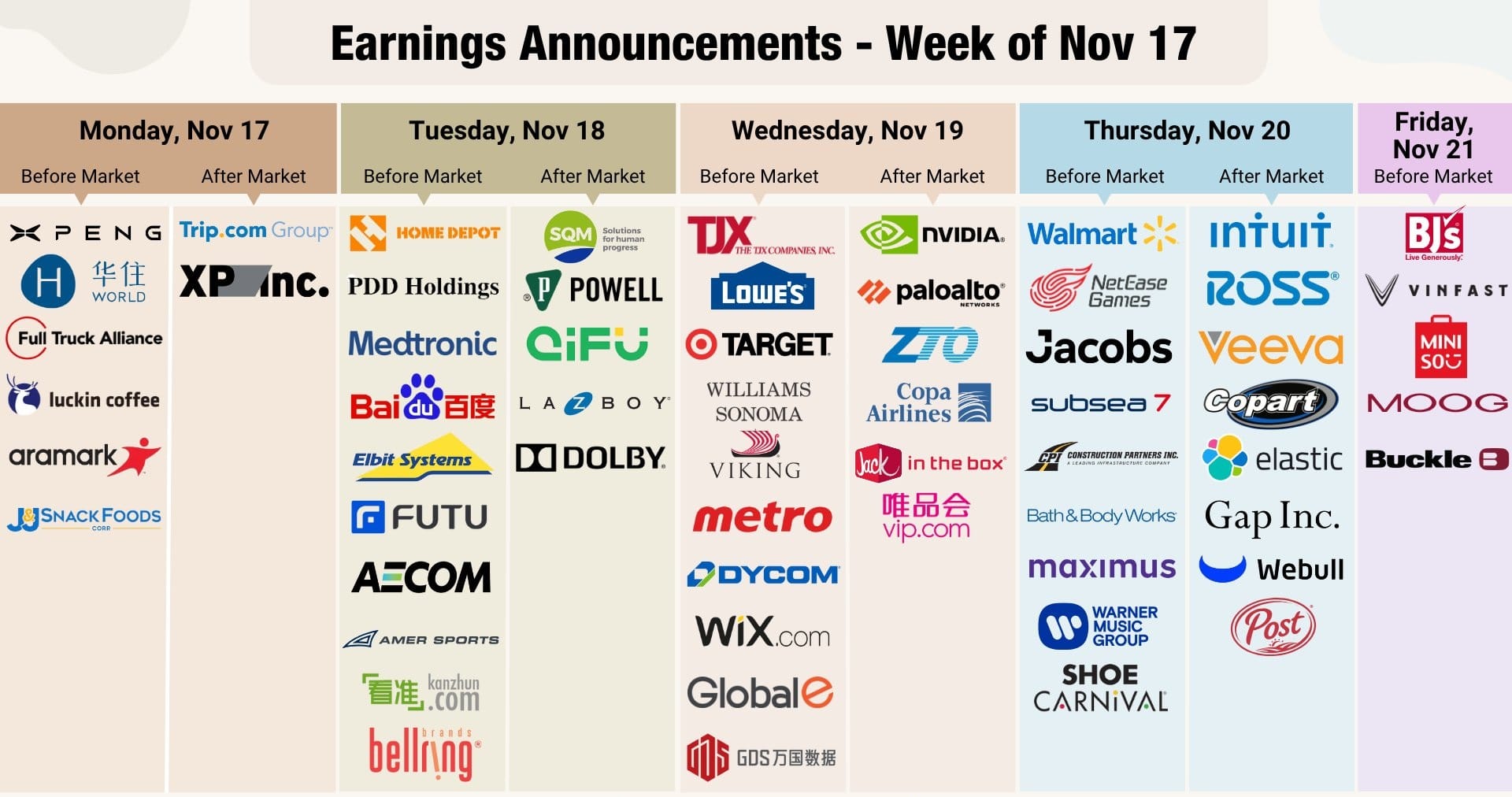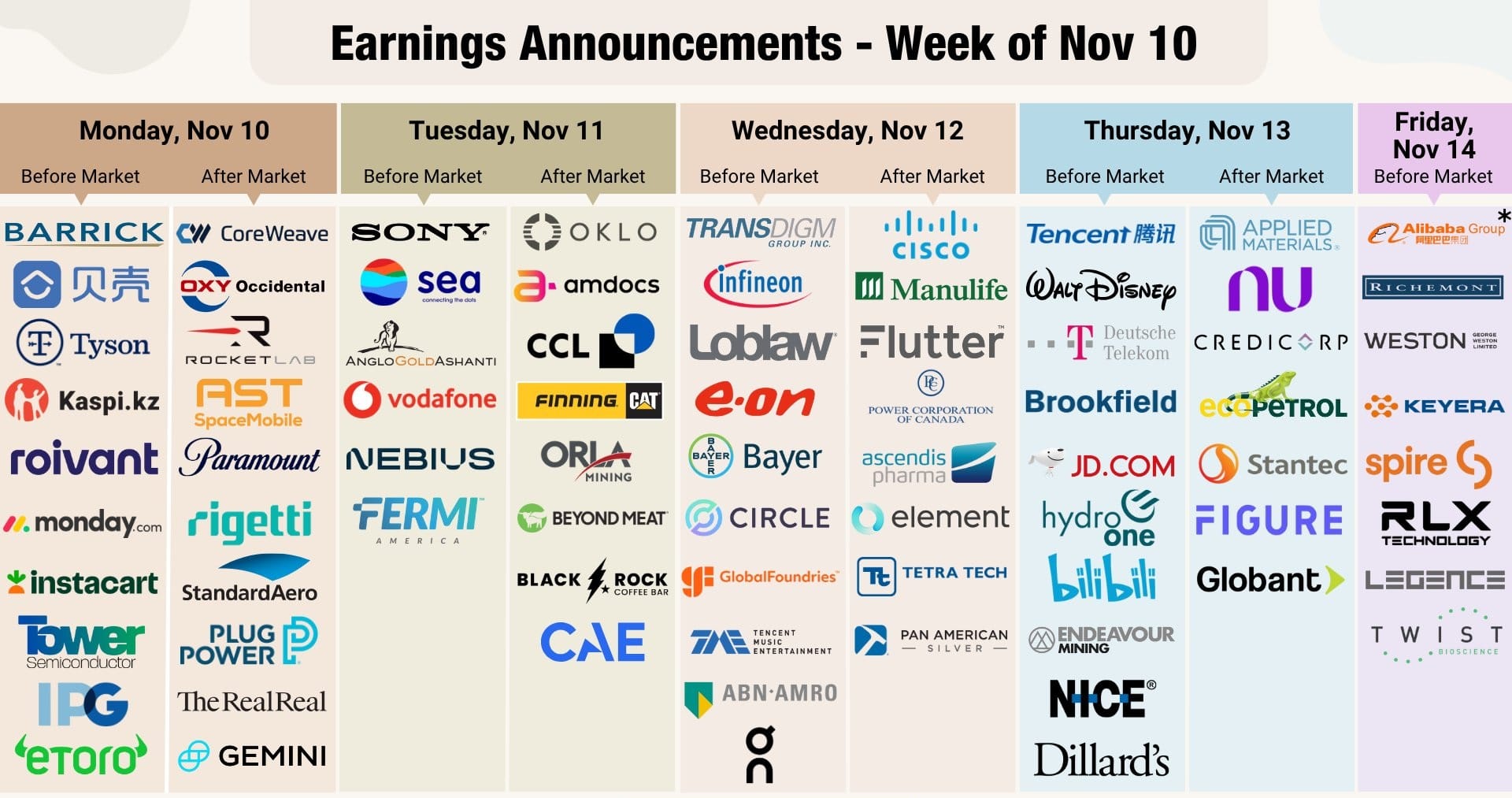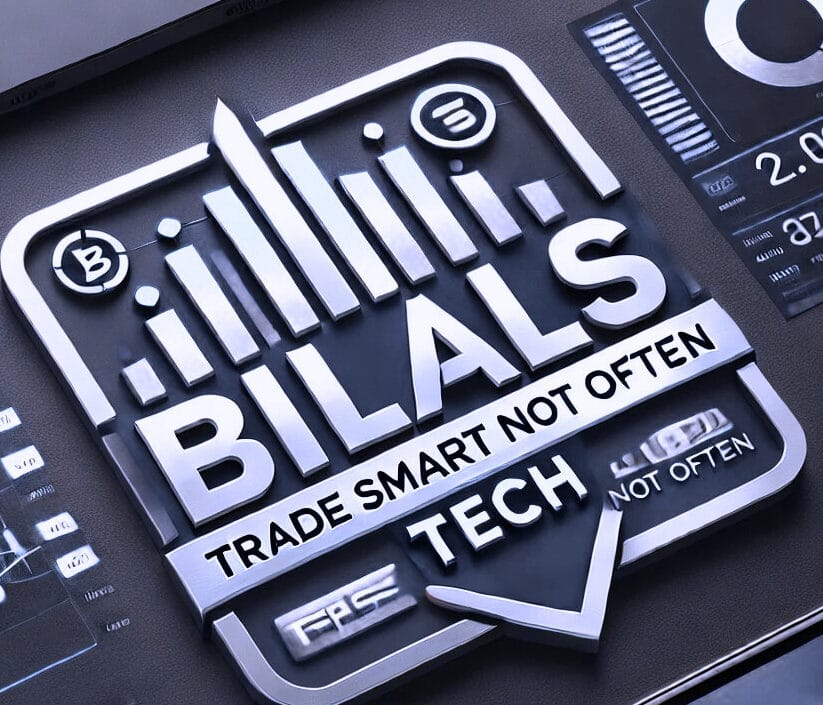North America News
Nasdaq Posts Best Day Since 2001 as U.S. Stocks Soar on Tariff Reprieve
U.S. equities surged on Wednesday, with the Nasdaq Composite recording its strongest session in over two decades after President Trump paused tariffs on 75 trading partners for 90 days.
The announcement ignited a relief rally across risk assets, reversing weeks of downward pressure.
Index Performance
- Nasdaq Composite:
+1,857.06 pts / +12.16%
Best day since January 3, 2001, when it rose 14.17% - S&P 500:
+434.13 pts / +9.52%
Among top five days in history, close to gains last seen during the 2008 financial crisis - Dow Jones Industrial Average:
+2,962.86 pts / +7.87%, closing at 40,608.45 - Russell 2000 (Small Cap Index):
+152.45 pts / +8.66%
Best day since March 24, 2020 (+9.39%)
The move reflects investors’ relief at a temporary de-escalation in global trade tensions and renewed hope for a more balanced macro policy approach.
However, the tariff pause does not extend to China, where tensions remain high. Markets may continue to price in volatility as negotiations evolve over the next quarter.
U.S. 10-Year Treasury Auction Draws Strong Demand, Yield at 4.435%
The U.S. Treasury auctioned $39 billion in 10-year notes at a high yield of 4.435%, better than the 4.465% WI level, signaling robust demand.
Auction details:
- Tail: -3.0 bps (strong vs 6-month avg of -0.2 bps)
- Bid-to-cover: 2.67x (above 2.56x avg)
- Indirect bidders (foreign): 87.9% (well above avg)
- Direct bidders (domestic): 1.4% (vs 17.9% avg)
- Dealers: 10.7%
Yields initially climbed on rate hike fears but reversed lower post-auction to 4.385%. The strong foreign demand helped ease concerns about softening global interest in U.S. debt.
Alphabet Plans $75 Billion in 2025 Capital Expenditure
Alphabet CEO Sundar Pichai announced plans to invest $75 billion in capital expenditures in 2025, lifting market sentiment.
- The NASDAQ rose 1.36% on the news
- S&P 500 gained 0.74%
- Dow Jones up 0.52%
The investment aims to reinforce Alphabet’s leadership in AI and data center infrastructure, following recent concerns after Microsoft hinted at pulling back on capex.
While the headline is bullish, market participants remain cautious as policy-driven uncertainty continues to weigh on corporate investment decisions.
Atlanta Fed GDPNow Estimate Improves Slightly to -2.4%
The Atlanta Fed GDPNow model upgraded its Q2 GDP forecast to -2.4%, up from -2.8% last week. A gold-adjusted figure puts growth at -0.3%.
Although the marginal improvement is notable, the print still implies the U.S. is tracking toward a technical contraction, consistent with rising market expectations for a recessionary scenario.

In their own words
The GDPNow model estimate for real GDP growth (seasonally adjusted annual rate) in the first quarter of 2025 is -2.4 percent on April 9, up from -2.8 percent on April 3. The alternative model forecast, which adjusts for imports and exports of gold as described, is -0.3 percent. After recent releases from the US Census Bureau and the US Bureau of Labor Statistics, both the standard model’s and the alternative model’s forecasts of first-quarter real final sales to private domestic purchasers growth increased from 1.4 percent to 2.0 percent.
10. 30-Year U.S. Mortgage Rates Hit 7%, Highest Since November
U.S. 30-year mortgage rates have surged to 7%, up 40 basis points in less than a week.
This sharp rise compounds affordability issues ahead of the spring homebuying season. It also marks the highest rate since late 2024, further weighing on housing activity and refinancing prospects.
U.S. Mortgage Applications Surge 20% as Refinance Activity Jumps
The MBA Mortgage Applications Index rose 20.0% in the week ending April 4, reversing the prior week’s 1.6% drop.
- Market index: 292.3 vs 243.6 prior
- Purchase index: 172.7 vs 158.2
- Refinance index: 961.4 vs 710.4
- 30-year mortgage rate: 6.61%, down from 6.70%
The gain was driven by a sharp uptick in refinancing demand, as borrowers moved quickly to capitalize on a brief dip in mortgage rates before this week’s renewed surge.
U.S. Wholesale Sales Jump in February, Inventories Stable
U.S. wholesale sales rose 2.4% in February, rebounding from a revised -0.9% in January.
- Inventories remained unchanged at +0.3%.
- The sharp rebound in sales suggests some resilience in supply chain demand, but forward-looking signals remain mixed given global trade uncertainty.

Trump Says China Wants a Deal — “They Just Don’t Know How to Go About It”
President Donald Trump said Wednesday that China wants to make a deal, but doesn’t know how to begin the process. His comments follow the U.S. announcement of a 90-day tariff pause for countries that haven’t retaliated against U.S. trade measures.
Key quotes from Trump:
- “People were getting yippy and afraid. I reversed tariffs for a short time to show flexibility.”
- “China didn’t make the cut because of their lack of respect in global markets.”
- “These will be fair deals with everyone, it’s working out maybe faster than I thought.”
- “I’m watching the bond market closely. It wasn’t tricky, but now it’s beautiful.”
- “Instinct guides me on these decisions.”
Markets initially interpreted the comments as constructive, but concerns remain about how a deal with China could materialize if both sides continue to escalate in parallel.
FOMC Minutes Highlight Growing Inflation Concerns, Trade Risks
The Federal Reserve’s March meeting minutes show growing concern among policymakers about inflation persistence amid rising tariff-related uncertainty.
Key takeaways:
- Risks seen tilted to the upside for inflation, downside for jobs
- Consumer spending showing signs of moderation
- Tariffs seen as a potential source of sustained inflation
- Participants flagged businesses delaying investments due to unclear policy
- Broad support for slowing balance sheet runoff
The Fed emphasized its readiness to wait for clearer data but acknowledged risks are rising on multiple fronts.
JPMorgan’s Dimon: Sticky Inflation Persists, Recession Likely
Jamie Dimon, CEO of JPMorgan Chase, warned that persistent inflation will not fade quickly and urged progress on trade negotiations to stabilize market sentiment.
Speaking on trade policy:
- Trade agreements should aim to strengthen U.S. partners, not weaken them.
- Dimon sees recession as a probable outcome, although current default levels remain low.
- He expects defaults to rise in the coming quarters as pressure builds.
Fed’s Kashkari: Tariffs Raise the Bar for Rate Cuts
Minneapolis Fed President Neel Kashkari said the recent tariffs have made it harder to justify near-term rate cuts.
- Tariffs have increased policy uncertainty.
- The hurdle to adjusting rates higher or lower has grown.
- Kashkari warned against “looking through” inflation created by tariffs, emphasizing the need to anchor long-run expectations.
- The neutral rate may be falling, but near-term easing remains risky.
BMO: Markets Too Fragile to Call Bottom Amid Tariff Escalation
Bank of Montreal warns that escalating U.S.-China trade tensions have moved the economic baseline toward stagflation or even recession, especially as the U.S. trade-weighted tariff rate hits ~30%.
Key insights:
- Tariffs risk prolonging sticky inflation and weakening real consumer spending.
- Markets had priced in brinkmanship—but now see limited signs of resolution.
- “Best worst-case” is stagflation; downside scenario is a full-blown recession.
- BMO says it’s too early to call a bottom in either risk assets or yields.
Fitch: Tariffs May Trim U.S. Deficit But Carry Long-Term Risks
Fitch Ratings says the latest round of U.S. tariffs could generate up to $800 billion in revenue, raising the Effective Tariff Rate to 25%, and temporarily reduce the federal deficit.
But the agency warns:
- Consumer spending and investment may weaken due to higher import costs.
- Tariffs may limit the Fed’s ability to cut rates amid slowing growth.
- Without broader fiscal reform, tariffs alone won’t resolve the structural deficit.
- The long-term economic drag could outweigh short-term fiscal benefits.
Fed’s Barkin: Tariff price hikes could begin by June
- Comments from Barkin in an interview with Axios
- Due to inventories, we are talking about June prices more than April
- Notes that he talked with a home-improvement company who won’t be doing Memorial Day promotions
- Some of the shifts we are seeing are both negative for employment and mean higher inflation
- Data at this point is still perfectly solid but people are wondering if consumer spending is at risk
- He sees “cage match between exhausted consumer and emboldened manufacturer”
- Watching consumers most closely, as big as part of economy.
- Worry if close to a moment where consumers decide to pull back, so far has not happened.
- Biggest thing affect consumer spending is whether they have a job, second is confidence, there is wealth effect..
- Equity market correction isn’t what leads to consumers sending pullback
- People are pulling back on air travel, but not on everyday spending
Fed’s Musalem sees growth this year materially below 2% trend
- Comments from the St. Louis Fed President
- Outlook is not for recession but slipping confidence, higher prices, below to household wealth point to slowing growth
- Do not see market dysfunction in recent volatility
- Financial conditions have tightened
- Tension between Fed’s dual mandate begin to materialize
- Inflation expectations well anchored, necessary to keep them that way
- Risky to assume the Fed can look through higher prices from tariffs, there is a chance some effects could persist
- Will take a balanced approach to mon pol as long as inflation expectations remain well anchored
- Business contacts are not turning to layoffs, but are taking a wait-and-see approach to hiring and capex
Bessent: Tariff levels are a ceiling if other countries don’t retaliate
- Comments from the Treasury Secretary
- China is the only country who is escalating
- I will take a lead negotiating with tariffs
- Overwhelmed with countries wanting to come to negotiate, we have 70 negotiations lined up
- “We are in pretty good shape.”
- “There is a little uncertainty, but in general the companies I’ve spoken to…tell me the economy is very solid.”
- Europe would cut its own throat by aligning with China
- US could approach China as a group with allies
Wall Street Journal’s Timiraos on the Federal Reserve: “They are in a no-win situation”
- Inflation to rise, growth to slow, rising bond yields
Notable Fed watcher Nick Timiraos’ latest in the Wall Street Journal:
The Journal is gated, but his tweet is a good summary of the main points:

Trump says China is manipulating yuan to offset against tariffs
- says we’re going to tariff pharmaceuticals
Trump says China is manipulating yuan to offset against tariffs
- says we’re going to tariff pharmaceuticals
- thinks China will make a deal at some point
Ex-JPMorgan’s Kolanovic: Market turmoil unprecedented, Fed response unusually muted
Views from Marko Kolanovic.
He says on the current market crisis, calling it unlike anything he’s witnessed in decades of experience spanning the Greenspan, Bernanke, Yellen, and Powell eras of the Federal Reserve.
Kolanovic said the scale and speed of the current dislocation surpass past crises. “I have never seen a market crisis of this magnitude,” he noted. What’s more troubling, he said, is the apparent complacency—or even indifference—coming from the Federal Reserve.
In contrast to past episodes when the Fed was quick to respond with policy tools or reassurance, Kolanovic suggests that the central bank now appears “almost disinterested, or even gleeful” as markets unravel.

Commodities News
Brent Crude Breaks 2024 Support as Bearish Momentum Deepens – SocGen
Brent crude oil has continued its downward slide, breaking key support at $68.10–$68.70, according to Societe Generale FX strategy notes.
- The break below 2024 lows signals bearish control
- Technical momentum indicators (MACD) hit multi-month lows, indicating stretched downside
- No meaningful bounce signals yet detected
Next downside targets:
- $57.80, then $54.00, if bearish pressure intensifies
- Short-term resistance: backtest of $68 zone
SocGen warns that a short-term rebound is possible but unlikely to reverse the broader bearish trend without a fundamental catalyst. Persistent global recession concerns and weak demand outlook continue to weigh on oil markets.

U.S. Crude Inventories Rise More Than Expected
The EIA reported a crude oil inventory build of 2.55M barrels, exceeding expectations (+1.42M).
Breakdown:
- Gasoline: -1.6M (vs -1.5M expected)
- Distillates: -3.54M (vs +0.26M expected)
- Refinery utilization: +0.7%
The data reinforces softening demand and seasonal volatility, with supply-side pressure keeping oil prices fragile amid a broader macro slowdown.
Silver Surges Past $30 as U.S. Dollar Slides on Trade War Jitters
Silver rallied nearly 2% to $30.40 as the U.S. Dollar Index (DXY) fell toward 102.00, driven by fears of a prolonged U.S.-China trade war.
- Market concerns center on 104% U.S. tariffs on Chinese imports
- Lack of near substitutes for Chinese goods is expected to be inflationary
- Traders are pricing in higher odds of Fed rate cuts in May (now 52.5% per CME)
Silver technicals:
- Price recovered from 14-day RSI oversold territory
- Still below the 200-day EMA ($30.70)
- Key support: $26.45 (Aug low)
- Resistance: $32.00 (April high)
The bounce reflects renewed interest in non-yielding assets amid recession fears and currency depreciation.
Palladium and Platinum Rise Modestly in Early Europe Trading
Palladium and Platinum prices advanced slightly in early European trade:
- Palladium (XPD/USD): Up to $914.75 from $909.75
- Platinum (XPT/USD): Higher at $924.55 from $922.10
The gains reflect mild safe-haven demand and technical positioning, as traders monitor commodity moves tied to tariff-related inflation pressures and EV supply chain constraints.
Gold Surges Over $100, Logs Biggest Intraday Gain Since 2016
Gold prices jumped over $100 on Wednesday to $3,081.26, posting a 3.33% gain—the metal’s strongest one-day rally since January 2016.
The session high reached $3,087.78, marking a $105.62 surge from Tuesday’s close.
- Safe-haven flows spiked amid escalating U.S.-China trade tensions
- Buyers stepped in near the 50-day moving average and the 38.2% Fibonacci retracement ($2,944.97) of the December rally
- Gold has gained 22.56% since December 18
With geopolitical risk rising and the Fed’s rate path uncertain, investor appetite for gold remains strong.
Europe News
European Equities Slide as Tariffs Take Effect
European stock markets fell sharply on Tuesday as U.S. tariffs on Chinese goods officially took effect, weighing on global risk sentiment.
Major market closes:
- Stoxx 600: -3.5%
- DAX (Germany): -3.2%
- CAC 40 (France): -3.2%
- FTSE 100 (UK): -3.0%
- IBEX (Spain): -2.0%
- FTSE MIB (Italy): -2.6%
Despite steep declines, indices closed off session lows.

JPMorgan Cuts UK Growth Outlook, Expects More BOE Rate Cuts
JPMorgan has slashed its 2025 UK GDP forecast to 0.6%, down from 1.1%, citing rising global trade tensions and domestic softness.
The firm now sees the Bank of England delivering an additional rate cut in September, taking the bank rate to 3.50%.
Meanwhile, Morgan Stanley has updated its outlook to forecast a rate cut at every BOE meeting for the rest of the year, implying a terminal rate of 3.25%—down from its prior view of 3.50%.
BoE: Hedge fund actions don’t amplify market volatility
- Key lines from the BoE’s Financial Policy Committee Record, April 2025
- Hedge fund actions don’t amplify market volatility.
- Vulnerabilities in market-based finance remain.
- A trade shift could harm stability by depressing growth.
- Banks can support the economy, even if conditions deteriorate.
- Risks linked to trade fragmentation have intensified.
- Risks of further corrections remains high.
ECB Said to Be Revising Growth Hit Estimate from U.S. Tariffs
According to Reuters sources, the ECB now sees U.S. tariffs having a much bigger impact on Eurozone growth than initially forecast.
- Earlier estimate: 50 bps hit to growth in the first year
- Revised view: >100 bps contraction possible if tariffs remain in place
The reassessment adds to broader market concern that the tariff shock will have more severe and prolonged effects than previously assumed, especially if retaliatory measures mount.
ECB’s Holzmann: Eurozone recession unlikely but growth may be weaker
- Remarks by ECB policymaker, Robert Holzmann
- Eurozone recession unlikely but growth may be weaker.
- Waiting is the best strategy in uncertainty is this high.
- I don’t see a reason for a rate cut for now.
ECB’s Escriva: Worst case scenarios are materialising – FT
- Bank of Spain Governor, Jose Luis Escriva in an interview with the Financial Times
- Worst case scenarios are materialising.
- Tariffs are triggering a very significant negative shock on economic activity.
- US policies could bring into question the dollar’s status as a reserve currency and safe haven.
- The precise fallout from tariffs is still uncertain and we are monitoring it closely.
- The impact on inflation will depend, among other factors, on trade retaliation and possibly on more expansionary fiscal policy.
- Suggested that the euro could emerge as as a more attractive alternative to the us dollar.
ECB’s Knot: Disinflation is well on track
- Remarks by ECB policymaker, Klaas Knot
- Disinflation is well on track.
- Rates are at the upper end of the neutral range.
- A trade war in the long term is a negative supply shock.
- The impact of a trade war on the long term is unlikely inflationary.
- Risk is that we move to a supply/demand situation like in 2022, which means we have to be vigilant on inflation.
- At meeting next week the ECB will not yet have new projections.
- Market functioning so far has been preserved.
- Reversal of bond markets needs to be monitored.
- Reality on markets can of course change quickly.
- As Europeans there is no choice but to come together and realise out own strength.
ECB’s Rehn: The case for cutting in April is supported by downside risks materialising
- Remarks by ECB policymaker, Olli Rehn
- Downside risks have materialised since March meeting
- Tariffs and increased uncertainty already having adverse effects on economic growth
- Impact on inflation in the euro area can be two-ways
ECB’s Villeroy: The shock from a trade war is not negligible but no recession in sight
- Remarks by ECB policymaker, Francois Villeroy de Galhau
- We estimate a trade war will reduce Eurozone growth by 0.25% in 2025
- ECB is fully mobilised to ensure financing of the economy and financial stability
- Certain market actors like leveraged hedge funds could face big liquidity needs
French industry minister says Europe needs firm, proportionate response to US tariffs
- Remarks by French industry minister, Marc Ferracci
- Europe needs to show a united front
- Analysing impact of hit to jobs from US tariffs in order to calibrate response
Asia-Pacific & World News
South African Rand Hits Record Low Amid Global Growth Fears
The South African rand is nearing a historic low of 20.00 per USD, pressured by the fallout from U.S. tariffs on South African exports and renewed global recession fears.
This sharp depreciation comes despite gold prices trading near record highs, which would typically support the currency. Domestic fundamentals remain weak:
- 2024 GDP growth: 0.6%
- 2025 forecast: Trimmed to 1.7% from 1.8%
- Inflation: Projected to rise to 4.5% from 3.6% in 2024
The South African Reserve Bank has guided for the benchmark rate to stabilize around 7.25%, just 25 basis points below current levels. However, the central bank will assess policy “meeting-by-meeting,” given deteriorating global conditions.
China Files WTO Complaint Over U.S. Tariffs
China has lodged a formal complaint with the World Trade Organization, calling recent U.S. tariffs under President Trump “reckless” and a threat to the multilateral trading system. Beijing expressed “grave concern” and accused the U.S. of undermining global trade rules.
However, the action is seen as largely symbolic. The WTO’s dispute resolution mechanism remains stalled due to the U.S. blocking appellate judge appointments for years. Market participants expect no meaningful impact from this move, as Trump has long dismissed the WTO’s authority.
China Raises Tariffs on U.S. Goods to 84%, Effective April 10
China escalated its response in the trade war by raising tariffs on U.S. goods to 84%, up from 34%. The new duties will go into effect April 10, according to a statement from the Finance Ministry.
The announcement, which came late in the day, delivered another blow to risk sentiment, reversing earlier hopes that Beijing might refrain from immediate retaliation. The escalation puts the next move firmly in the U.S.’s hands, heightening market volatility and global economic uncertainty.
China to Convene Emergency Economic Talks to Respond to U.S. Tariffs
Top Chinese officials are reportedly meeting today to discuss new economic support measures, according to Reuters.
The meeting will include representatives from:
- The State Council
- The People’s Bank of China
- The Finance Ministry
Goals:
- Stabilize the economy amid external pressure
- Support domestic capital markets
- Coordinate fiscal and monetary response
The news helped lift Chinese equities into the close, though full policy details remain pending.
PBOC Moves to Slow Yuan Decline, Limits Dollar Buying by State Banks
The People’s Bank of China has reportedly asked major state-owned banks to curb U.S. dollar purchases in the onshore market, aiming to slow the yuan’s depreciation.
Reuters sources say:
- Banks were told to scrutinize large dollar-buying orders from clients.
- Proprietary dollar buying by banks has been discouraged.
- Some state banks were seen actively selling dollars and buying yuan during Tuesday’s session.
This is part of Beijing’s broader effort to stabilize FX volatility amid escalating trade pressure.
Fitch Downgrades Six Chinese Banks on Sovereign Support Concerns
Fitch Ratings downgraded six Chinese banks from A+ to A, citing weaker sovereign support capacity:
- China Development Bank (CDB)
- The Export-Import Bank of China (ExIm)
- Agricultural Development Bank of China (ADBC)
- Postal Savings Bank of China (PSBC)
- Standard Chartered Bank (China)
- United Overseas Bank (China)
The first three are policy banks, and Fitch still expects “very strong” government support. However, the downgrade reflects a lower sovereign ceiling and Beijing’s reduced ability to deliver extraordinary assistance in a crisis.
Goldman Sachs Flags Tariffs as Major Growth Risk for China
Goldman Sachs warned that continued U.S.-China tariff escalation is a growing downside risk to its 2025 China GDP forecast of 4.5%.
The firm anticipates further policy easing from Beijing in the coming months to offset the drag from tariffs, especially if Trump proceeds with an additional 50% levy. The broader message: growth stability now depends heavily on government response.
China premier Li: We are prepared to deal with uncertainties
- Remarks by China premier, Li Qiang, via state media
- China’s economy continues to be on an upward recovery trend
- We will push policies in a timely manner depending on what is called for by the situation
- Expanding domestic demand is a long-term strategy
- We need to implement more proactive macroeconomic policies
China white paper on US trade says willing to communicate on issues such as economy, trade
- Risk trades jump on the headline
The headline might look optimistic but the rest of the white paper and accompanying comments seem to be a bit more feisty.
- The US will not solve its own problems by raising tariffs
- China urges dialogue with US to resolve trade dispute
- It is normal for China and US to have differences and frictions in economy, trade
- China firmly opposes US tariffs and will not accept this kind of bullying
- If US wants to resolve the problem via dialogue, it should show equality, respect
- China will continue to take measures to safeguard its rights, interests
PBOC sets USD/ CNY reference rate for today at 7.2066 (vs. estimate at 7.3348)
- PBOC CNY reference rate setting for the trading session ahead.

RBNZ Cuts Rates by 25bps, Signals Further Easing Ahead
The Reserve Bank of New Zealand lowered its Official Cash Rate (OCR) by 25 basis points to 3.50% at its April 9 meeting, aligning with market expectations.
However, meeting minutes and the post-decision statement point to a more dovish tilt. The Monetary Policy Committee noted that the impact of earlier rate cuts is still unfolding, and global trade barriers—particularly tariffs—pose a significant risk to domestic growth.
Key points from the RBNZ:
- Monetary policy has scope for further easing through 2025 if risks evolve.
- CPI remains close to the middle of the 1–3% target range.
- The inflationary impact of tariffs remains ambiguous, while spare capacity persists in the economy.
- Medium-term inflation outlook will dictate future rate decisions.
Japan top currency diplomat says closely watching market moves with high sense of urgency
- Remarks by Japan top currency diplomat, Atsushi Mimura, after the meeting between the BOJ, MOF, and FSA
- Discussed unstable moves in financial markets
- Talks were held in response to US tariffs
- Agreed to do utmost to maintain global financial market stability
Bank of Japan Governor Ueda scrutinizing US tariff impact on Japan
Bank of Japan Governor Ueda said the central bank has been raising rates so far based on the view that keeping rates too low for too long, when the economy and prices are recovering, risks creating economic excesses and could force rapid rate hikes later.
- He added that the rate hikes have been focused on underlying inflation, which is gradually moving toward the 2% target.
- Ueda noted that uncertainty surrounding both domestic and overseas economies is increasing due to U.S. tariffs.
- The BOJ is carefully analysing how the tariffs could affect Japan’s economy and prices through various channels.
- He also pointed out that there remains uncertainty around how U.S. tariff policy will unfold, and said the BOJ wants to closely monitor developments.
Japan Kato: Won’t sell us Treasury holdings just from standpoint of US-Japan relations
- Japan Finance Minister Kato
- There is no preset standard on what is appropriate size of Japan’s foreign reserves
- Don’t think size of Japan’s foreign reserves is too big
- We hold foreign reserves in case we need to conduct FX intervention
- Won’t sell us Treasury holdings just from standpoint of US-Japan relations
South Korea Unveils Emergency Auto Sector Support After U.S. Tariff Shock
In response to a new 25% U.S. tariff on imported vehicles and parts, South Korea rolled out a package of emergency measures to support its auto sector, which exports nearly half its production to the U.S. annually.
Key steps include:
- Expanding policy financing to ₩15 trillion ($10.2B).
- Cutting car purchase tax from 5% to 3.5% through June 2025.
- Boosting EV subsidies to 30–80%, extended through year-end.
- Accelerating market diversification, particularly in the Global South.
The measures target immediate demand support and strategic export resilience.
Crypto Market Pulse
Crypto Reclaims $2.7 Trillion Market Cap as Trump Tariff U-Turn Triggers Relief Rally
The global cryptocurrency market capitalization surged above $2.7 trillion on Wednesday, recovering sharply from earlier losses after President Trump announced a sweeping tariff policy reversal, excluding China.
Markets reacted to Trump’s move to implement a flat 10% reciprocal tariff across 75 countries, temporarily reversing last week’s steep hikes. Only China was hit harder, with tariffs raised to 125%, igniting fears of a continued trade standoff between the two superpowers.
Bitcoin Price Action
- BTC peaked at $83,000, up from an intraday low of $74,600
- Current price: ~$82,500, up 6.5%
- Intra-day volatility shows a 11% range, reflecting uncertainty and aggressive positioning by traders
Swing trading activity is picking up amid the volatility, with traders seizing short-term opportunities driven by policy flip-flops and shifting global sentiment.
Altcoin Outperformance
Top-performing altcoins in the top 25:
- Solana (SOL)
- Cardano (ADA)
- Ripple (XRP)
Each gained double digits, outpacing Bitcoin’s rebound.
Crypto News Briefs
- 21Shares & House of Doge launch the first-ever Dogecoin ETP on the SIX Swiss Exchange (Ticker: DOGE), fully backed and endorsed by the Dogecoin Foundation
- Argentina’s Congress launches an official investigation into the Libra memecoin scandal, following allegations of fraud tied to early government endorsements
- Tether increases its equity stake in Bitdeer Technologies to 22.8%, up from 21%, as part of a broader push into crypto infrastructure and mining
With crypto volatility returning in full force, all eyes remain on macro developments. Analysts warn that while Wednesday’s rally is substantial, risk appetite may remain fragile until there’s greater clarity on U.S.-China trade dynamics and monetary policy direction.

Bitcoin Surges Past $80K as Trump Pauses Tariffs for 75 Countries
Bitcoin (BTC) surged above $80,000 on Wednesday following President Donald Trump’s announcement of a 90-day pause on newly imposed reciprocal tariffs for 75 countries, citing their cooperative, non-retaliatory stance.
In a statement posted on Truth Social, Trump revealed that the U.S. would reduce reciprocal tariffs to a 10% flat rate during the pause period. However, China is excluded from this relief: the U.S. raised tariffs on Chinese imports to 125%, citing Beijing’s 84% counter-tariffs and “lack of respect for global markets.”
The market reaction was immediate:
- BTC jumped over 6%, reclaiming $80K
- Ethereum (ETH), XRP, and Solana (SOL) rallied more than 10%
- Meme coins and DeFi tokens posted double-digit gains:
- DOGE +10%, HYPE +25%, ONDO +20%, RENDER +17%, PEPE +15%
The rally mirrors stock markets, where tech names like NVIDIA, Tesla, and Apple soared over 12%. The Nasdaq-100 rose more than 10%, on track for one of its strongest days in history.
The S&P 500 also advanced over 8%, boosted by risk-on sentiment and a temporary resolution in trade policy. Market participants are now looking to see whether the relief rally has staying power or is simply a brief reprieve amid deeper structural risks.
TRON DAO Facilitates $1.2B in USDT Inflows Amid Tariff-Driven Crypto Volatility
TRON DAO enabled over $1.2 billion in USDT exchange inflows this past week, amid a broader crypto selloff triggered by Trump’s tariff escalation.
- On-chain volume surged to $72 billion—a high not seen since February
- Active wallets topped 300,000
- TRON now ranks as the 8th largest blockchain by market cap ($21.7B)
The inflows may reflect either dip-buying behavior or derivatives unwinding, according to IntoTheBlock analysts.
Crypto markets have been under pressure:
- Bitcoin dropped to $76,198
- Ethereum fell below $1,450
- Total crypto market cap declined by 3.46% to $2.43T
While macro headwinds persist, TRON’s stablecoin infrastructure appears to be absorbing liquidity amid heightened volatility.

The Day’s Takeaway
Day’s Takeaway: Key Market Trends & Developments
U.S. Markets
- Markets Soar on Tariff Reprieve: Equities staged one of the strongest rallies in two decades after President Trump announced a 90-day pause on reciprocal tariffs for 75 countries, citing “non-retaliation” as the rationale. The Nasdaq posted a 12.16% gain, its best day since 2001, while the S&P 500 rose 9.52%.
- China Still Targeted: The tariff relief excludes China. Trump raised Chinese tariffs to 125%, escalating bilateral tensions despite broader global easing.
- FOMC Minutes: The Fed minutes showed rising inflation concerns, policy caution, and an acknowledgment that tariff-related uncertainty is delaying corporate investment and complicating the inflation outlook.
- Treasury Auction & Bond Demand: A $39B auction of 10-year notes saw strong international demand, with indirects taking up 87.9%. The bid-to-cover ratio improved to 2.67x.
- Mortgage Market Diverges: Applications surged 20% last week, driven by refinancing, even as 30-year rates hit 7%, up 40 bps week-on-week.
- Jamie Dimon & Fed Caution: JPMorgan CEO Jamie Dimon warned of sticky inflation and likely recession. Fed’s Kashkari and Goolsbee both noted that tariffs raise the bar for cuts and complicate policy decisions.
Commodities
- Crude Oil:
- WTI and Brent continue to face downward pressure, with Brent slipping below key support at $68.10–$68.70. SocGen projects potential tests of $57.80 or lower, citing lack of demand recovery and tariff impact on global growth.
- Gold:
- Surged $100 intraday, closing near $3,081, its biggest single-day gain since 2016. The rally was fueled by safe-haven flows and technical bounce off the 50-day moving average.
- Silver:
- Rebounded to $30.40, as investors anticipate slower growth and potential Fed cuts. RSI signals suggest a tentative reversal from oversold conditions.
- Palladium & Platinum:
- Both posted modest gains in early European trading, reflecting generalized metal support amid macro risk.
Europe
- Stocks Rally with U.S.:
- European indices rebounded, catching late-session strength after the U.S. tariff pause. However, Monday’s losses from the initial tariff spike left the Stoxx 600 still negative week-to-date.
- ECB Tariff Impact Reassessment:
- Sources say the ECB is revising its tariff impact estimate, with potential GDP hit now seen exceeding 1%, double previous projections.
- UK Outlook:
- JPMorgan cut UK GDP growth to 0.6% and expects the BOE to cut rates to 3.5% by year-end. Morgan Stanley sees a steeper path, ending at 3.25%.
Asia
- China Retaliates:
- Beijing increased tariffs on U.S. goods to 84%, effective April 10, escalating the trade standoff. The move followed Trump’s China-specific hike to 125%.
- Policy Support Ramps Up:
- China pledged emergency stimulus, reduced dollar purchases by state banks, and directed state funds to support equities. A high-level economic meeting is reportedly imminent.
- South Korea:
- Announced ₩15 trillion in financing, tax cuts, and expanded EV subsidies to offset the impact of new U.S. 25% auto tariffs.
- New Zealand:
- The RBNZ cut rates 25 bps to 3.50%, citing downside risk from global trade barriers. Further easing expected as tariff effects materialize.
Rest of World
- South Africa:
- The rand hit an all-time low near 20.00/USD as the country was included in U.S. tariff actions, despite improving electricity conditions and resilient gold exports. Inflation is trending up; SARB now expects 4.5% for 2025.
- Fitch Actions:
- Downgraded six Chinese banks to A from A+, citing lower government support capacity. Also warned that U.S. tariffs may reduce the deficit short-term but carry long-term risks, including a higher probability of recession.
- BMO & Goldman Warnings:
- Both firms reiterated the risk of stagflation if tariffs persist. Goldman flagged tariff escalation as a key downside risk to its 4.5% China GDP forecast, expecting more stimulus ahead.
Crypto
- Bitcoin (BTC) rallied to $83,000, up 6.5%, after Trump’s tariff pause.
- Ethereum (ETH), Solana (SOL), XRP, and meme coins posted 10–25% daily gains, mirroring the stock rally.
- Market cap recovered to $2.7 trillion, with TRON DAO reporting record $72B on-chain stablecoin volume last week.
- Dogecoin launched its first Swiss-listed ETP, further institutionalizing the memecoin space.
- Argentina opened an official investigation into the Libra memecoin scandal, following political fallout tied to early endorsements.
Bottom Line:
Markets are breathing a sigh of relief—but it’s fragile. The tariff pause triggered a broad relief rally, but China remains a key unresolved flashpoint. Volatility is elevated across all major asset classes. The next 90 days could be pivotal for inflation expectations, central bank direction, and the path of the global economy.

















